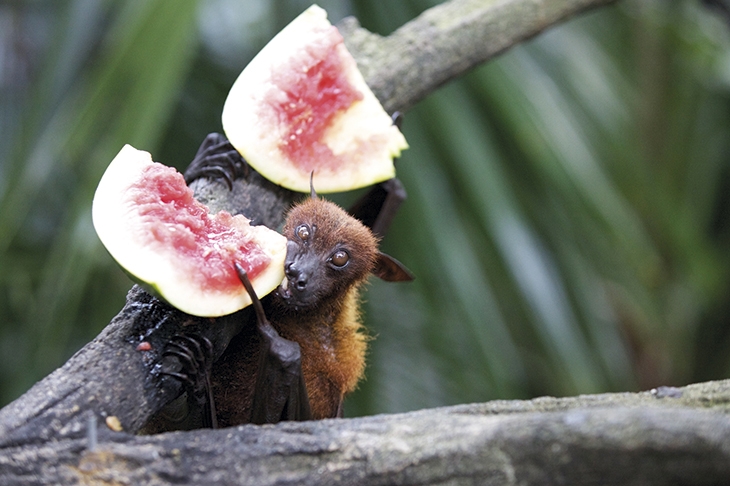‘You’d like me to write about bats? I’ve not held one in earnest for years,’ I said, although I did break what I reckoned was about 24 years of cricket abstinence by opening the innings for the Lord’s Taverners in Cape Town shortly before lockdown. For the record, I was just getting the hang of it again when I dragged one back on to my stumps for 5, confirming that it is indeed a cruel game and that giving up had been the right thing.
Anyway, it transpires that the topic was actually the other bats: little flying things, sometimes big flying things (I’m always amazed at the sight and size of the fruit bats, or ‘flying foxes’, in Sydney). They’ve been given unreal reputations by the legend of Dracula and right now, of course, are not exactly revelling in the press from Wuhan.
Many years ago I agreed to a photo call to promote the cause of our bats. I left Trent Bridge just after the start of play in a Test there and five minutes later was holding the most gorgeous, delicate little pipistrelle in one hand and a cricket ball in the other. Side by side, the cricket ball was definitely the more threatening.
One could not help but be fascinated by these creatures. On the back of that first encounter came an invitation from the Bat Conservation Trust to the London Wetland Centre in Barnes, where bats simply abound. Later, for Radio 4 and with the help of a local bat group, I found myself walking through Romsey, my local town, and up the banks of the River Test, bat-detector in hand. The best time is at dusk, just when in midsummer the mosquitoes and other biting insects are taking to the air.
The two main benefits of a healthy bat population — depending on where in the world you are — are pest control and pollination. Those in hotter climes help with the pollination of mangos, bananas, durian, guava and agave. If tequila is helping you through lockdown, then you need those agaves.
In the UK our common species will chomp their way through thousands of small insects every evening — that little pipistrelle can manage 3,000 per night.
With the bat-detector you can identify species by the frequency of the sound of their echolocations, be they pipistrelle, Daubenton’s (particularly adept at feeding off prey found on the surface of water) or any other of the 17 species listed as resident in the UK. At dusk, one can just about follow the flight of the bats as they swoop on the river or among the trees that line the banks. It’s captivating. And each mossie bite serves simply to remind us that the bats are indeed our friends.
And if you’re feeling lonely in lockdown, spare a thought for the greater mouse-eared bat. According to the BCT website, the species was deemed extinct in 1990 — but they have located one lone survivor, who has been hibernating in southern England since 2002.
Got something to add? Join the discussion and comment below.
Get 10 issues for just $10
Subscribe to The Spectator Australia today for the next 10 magazine issues, plus full online access, for just $10.
You might disagree with half of it, but you’ll enjoy reading all of it. Try your first month for free, then just $2 a week for the remainder of your first year.














Comments
Don't miss out
Join the conversation with other Spectator Australia readers. Subscribe to leave a comment.
SUBSCRIBEAlready a subscriber? Log in